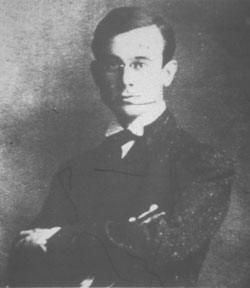
Francis C. Sullivan was born in Kingston, Ontario in
1882 and lived there until he was 18 years old. He left Kingston for Ottawa, Ontario and
worked as a draftsman and later (about 1908) as a partner in the offices of Moses Edey. By
1911 he had met Frank Lloyd Wright and worked for him for several months. In the fall of
1911 Sullivan returned to Ottawa and became the architect for the Pembroke, Ontario Public
Library system after submitting three designs for a new public library and having one
accepted, though modified to meet budget constraints before construction. It is believed
that one of the two rejected designs was done in collaboration with Wright.
During the next five years Sullivan went on to design
numerous public and ecclesiastical buildings and several private residences throughout
central Canada. He also worked on several projects with Wright during this period, but
only the Banff Park Pavilion for the Banff National Bank in Alberta was executed. In 1916
an unexpected lack of work caused him to close his once prosperous office in Ottawa and
travel to Arizona to seek work at Taliesin with Wright again. Sullivan worked on drawings
for the Imperial Hotel commission in Japan but soon afterwards left Taliesin and went back
to Ottawa.
In 1918, back in Ottawa but still with no work, he
finally obtained a job designing hospitals for the Canadian Military Hospital Commission.
This lasted until 1921 when he returned to Chicago to obtain work. He had varying success
obtaining commissions on his own, working for other architects and producing a series of
sketches for the Eberhard Faber Company. He also had obtained work with the Chicago Board
of Education. In 1926 Sullivan was operated on for throat cancer and shortly thereafter
was invited by Wright to come to Arizona where he remained until his death in 1929.
